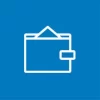For most people, a private account (checking account) is their main bank account. Changing other accounts, like pillar 3a retirement accounts and savings accounts, is generally uncomplicated. Opening supplemental accounts at other banks is also easy. But changing the private account which you use for all financial transactions is more complicated, so this guide primarily applies to moving to a new private account.
Private accounts typically include the following services:
- Payment of bills (via online banking, for example)
- Receiving money transfers (from your employer, for example)
- Withdrawing money at ATMs using a debit card
- Paying for purchases with a debit card
Other services which are often available in conjunction with a private account include credit cards, savings accounts, and retirement saving solutions (vested benefits, pillar 3a).
Important: Savings accounts are primarily designed for saving. They are not suitable for making frequent financial transactions (multiple incoming and outgoing bank transfers or payments). Some savings accounts do not let you make transfers at all, and many have transaction fees. Transferring money between your own savings accounts and your private account at the same bank, on the other hand, is generally free of charge.
The costs of Swiss private accounts differ from one bank to another. Because there are big differences between private accounts, a good first step is to compare the costs of accounts based on your specific needs and habits in order to find a suitable offer. The private account comparison helps you to do that.
In some situations, it can be beneficial to change only your private account, while keeping your savings and pillar 3a accounts at your current bank. Savings accounts and pillar 3a accounts are normally free of charge – although some banks do not let you use their savings accounts without using their private account as well.
Once you have decided on a new private account, then it is time to begin the migration. The checklist below will guide you through the process step by step.
1. Check the requirements for closing your account
Get informed about the terms and conditions for closing your existing account. Many banks let you cash out the full balance of a private account without having to give notice. But some private accounts have limitations for withdrawals. If you want to transfer more money to your new account than the limit allows, then you will have to make sure to give notice early on, as per the required notice period. Notice periods are typically three months. Make sure that you do not send more money to your new account than the withdrawal limits allow, as banks can charge you high penalty fees for doing this. If your old account has limitations on the size of withdrawals, then cashing it out using a series of smaller transfers is recommended.
If you will also be cashing out a savings account, be aware that limitations on withdrawals are often tighter for savings accounts than private accounts. Many only let you withdraw relatively small amounts without giving notice first. Some Swiss savings accounts require you to give notice for withdrawals in excess of just a few thousand francs per month.
2. Open your new account
Whether you visit your prospective bank in person or open the account online, you will have to properly identify yourself. You can do this by showing yourself and your ID card or passport, or your Swiss residence permit if you are not a Swiss citizen.
When you open your account, specify which supplemental services you want, such as debit cards, credit cards, a savings account, and/or a pillar 3a account. You will receive the IBAN for your new account shortly after it has been opened.
3. Share your new account information
Once you have received the new IBAN, you need to contact all parties which may need to send you money and provide them with your new account information. It can take several weeks until your bank details are updated in all of their databases. These are the parties which you should inform about your new account:
- Your employer(s)
- Your landlord (for reimbursements of rent and supplemental charges)
- Your health insurance
- The tax office
- The social security office*
- Your pension fund*
- The social services office*
* If you receive money from these offices, such as pensions, benefits, or welfare.
If you pay bills using direct debits, you have to contact the companies and ask them for new direct debit forms. Once you have these, you should fill them out, sign them, and send them back. Alternatively, you could consider moving recurring payments to eBills or credit cards, when possible. Direct debits are commonly used for these payments:
- Health insurance
- Other insurances
- Credit cards
- Mobile, Internet, and TV plans
- Serafe radio and television fees
- Magazine and newspaper subscriptions
- Electricity bills
- Public transportation (GA subscriptions, for example)
- Gym memberships
- Other memberships
You do not need to provide new bank account details for bills which you pay using standing orders, QR-bills, or credit cards.
If you will also change your credit card along with your private account, then you also need to update your credit card information everywhere where you have saved it for recurring payments. Credit card information is commonly stored for the SBB/CFF app, and online subscriptions like streaming services (Netflix or Spotify, for example).
4. Set up new standing orders
Standing orders are commonly used for recurring payments like rent, insurance premiums, and savings plans (transfers to savings or pillar 3a accounts, for example).
Deactivate all the standing orders in your old account and set up new standing orders for all of these transfers in your new account. Make sure not to accidentally create duplicate standing orders.
5. Check your bank statements
Check and compare the bank statements from your old and new bank accounts. Did your salary get paid into your new account? Was the rent deducted from your new account as per a standing order?
Some parties, such as landlords, tax offices, and insurance companies, may only sporadically transfer money to your account. If you get mail informing you about a payment to you, check whether the money actually arrives in your new account.
6. Close your old account
It can take up to two weeks from the time you open a new account until you receive all of your new account information, payment cards, and online banking access.
If your financial situation allows for it, you can already transfer a larger amount of money to your new account and make your first payments.
Tip: Before you close your old account, download or request all your bank statements and receipts. After you close your account, you normally will not be able to access these documents any more.
Have your former bank close your old bank account. Some banks charge a fee of up to 50 francs when you close your account or terminate your banking relationship. You should normally only close your account once your new private account is up and running.
More on this topic:
Compare private accounts now
Compare savings accounts now
Compare banking packages now

 Deal of the Day
Deal of the Day 





